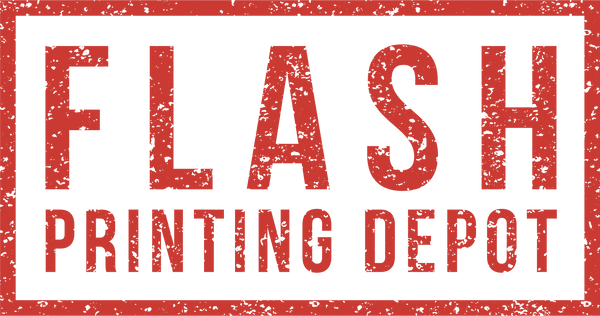
DTF vs. Screen Printing: Which is Right for Your Business?
Share
If you're in the custom apparel business, you know that choosing the right printing method is crucial. It affects your production speed, costs, and the final quality of your products. Two of the most popular methods in the industry today are Direct-to-Film (DTF) and traditional screen printing. But which one is the best fit for your business?
At Flash Printing Depot, we specialize in DTF, but we understand that each method has its place. In this post, we'll break down the differences between DTF and screen printing to help you make an informed decision for your print shop.
The Basics: How They Work
Screen Printing is a classic technique where ink is pushed through a mesh screen onto a garment. Each color in a design requires a separate screen, making it a labor-intensive process to set up. As explained by printing experts at Ricoma, "Screen printing works by pushing ink through a mesh screen onto your fabric" [1]. This method is known for its durability and vibrant colors, especially on cotton garments.
DTF (Direct-to-Film), on the other hand, is a more modern approach. A design is printed onto a special film, coated with an adhesive powder, and then heat-pressed onto the garment. This process allows for full-color, detailed designs without the need for multiple screens.
DTF vs. Screen Printing: A Head-to-Head Comparison
Let's take a look at how these two methods stack up against each other in several key areas:
| Feature | DTF (Direct-to-Film) | Screen Printing |
|---|---|---|
| Color & Detail | Excellent for full-color, complex designs with gradients and fine details. No limit on the number of colors. | Best for simple, bold designs with a limited color palette. Each color adds to the cost and complexity. |
| Fabric Versatility | Can be applied to a wide range of fabrics, including cotton, polyester, blends, and even hard surfaces. Works on any color garment. | Works best on cotton and cotton blends. Printing on dark garments requires an underbase, adding an extra step and cost. |
| Setup Time & Cost | Minimal setup time. Simply print the design and it's ready to press. Cost-effective for small runs and one-off prints. | Lengthy setup process that involves creating a screen for each color. High setup costs make it best for large volume orders. |
| Feel of the Print | DTF prints are known for their soft, flexible feel. The design sits on top of the fabric, but it's lightweight and stretchable. | The feel can vary. While some screen prints can be soft, they often have a thicker, heavier feel, especially with multiple layers of ink. |
| Durability | Highly durable with excellent wash and stretch resistance. The print won't crack or peel, even after many washes. | Very durable, especially when cured properly. However, thick prints can be prone to cracking over time. |
| Best For | Small to medium-sized orders, full-color designs, and businesses that need to print on a variety of fabrics. | Large volume orders (100+ pieces) of the same design, simple graphics, and promotional items. |
Why We Champion DTF
While screen printing has been a trusted method for decades, we believe DTF is the future of custom apparel. The versatility, quality, and cost-effectiveness of DTF make it a game-changer for businesses of all sizes. With our custom DTF transfers, you can produce high-quality, full-color prints without the hassle and expense of screen printing.
And if you're ready to bring your entire printing operation in-house, our DTF Smart Shakers and premium consumables provide a complete, professional-grade solution.
For more in-depth comparisons and tutorials, be sure to check out our YouTube channel, Straight Outta Content, where we share our expertise and help you stay ahead in the printing game.
References
[1] Ricoma. (2024, August 1). Screen Printing vs. DTF: What's the Difference?. Retrieved from https://blog.ricoma.com/2024/08/01/dtf-vs-screen-printing/ ""
